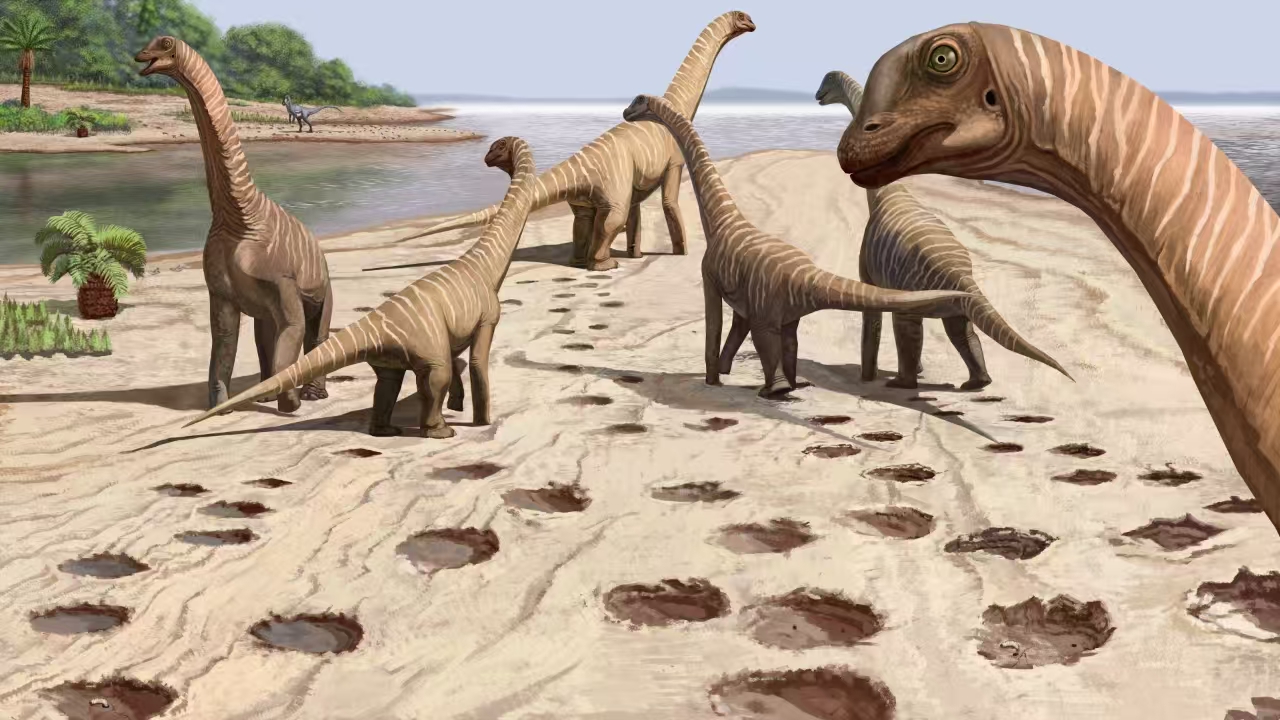
University of Queensland palaeontologist Dr Anthony Romilio has contributed specialist expertise to a new study of dinosaur tracks discovered in central China, digitally reconstructing trackways preserved on near-vertical cliff faces.
The fossil site, located in Ningxia Province and once part of a saline lakeshore over 100 million years ago, preserves rare trackways from unusually small sauropods – offering insights into how dinosaurs adapted to extreme environmental stress.
The Yaoshan site preserves eight distinct trackways from small, long-necked sauropods, each left by a different individual.
“These sauropods were tiny compared to their colossal cousins,” Dr Romilio said.
“Based on footprint dimensions, the largest stood about 1.7 metres tall at the hips – roughly human height – while others were significantly smaller.”
Traditional field measurements were impossible due to the site’s steep inclination.
Instead, the research team used drones to capture high-resolution imagery, which was later transformed into 3D surface models for analysis.
Although not present during the 2024 fieldwork, Dr Romilio had visited Ningxia in 2023 as a consultant to the Ningxia Geological Museum.
“While I wasn’t on-site at Yaoshan, I’d previously demonstrated how to apply digital documentation methods on steep fossil sites,” he said.
“It’s rewarding to see those techniques used so effectively.”
Dr Romilio processed the drone imagery into a detailed 3D model of the cliff surface, then developed custom Python tools to semi-automate the analysis – extracting stride lengths, hip heights, and walking speeds directly from the fossil track data.
“These trace fossils offer a glimpse into dinosaur life during the Aptian–Albian Oceanic Anoxic Event,” he said.
“Despite high temperatures, salinity, and water stress, these small dinosaurs appear to have thrived.
“Some tracks even show them disturbing invertebrate burrows.”
The study highlights how digital methods are expanding palaeontological research in places where traditional fieldwork is unfeasible.
The study was led by Dr Qing Yang (Ningxia Geological Museum) and Professor Lida Xing from China University of Geosciences (Beijing), and has been published in the Swiss Journal of Palaeontology.



